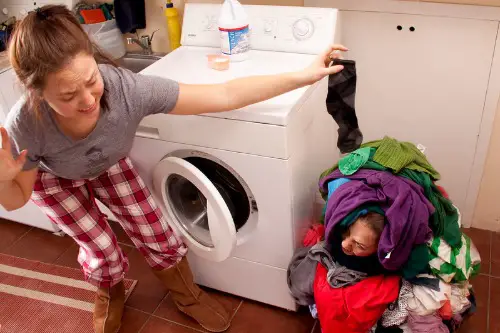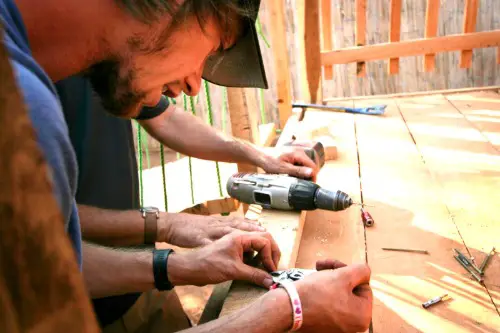1. Laundry

Laundry is still widely considered a “female” chore in American households. Women are more likely to sort, wash, fold, and put away clothes—even when both partners work full-time. The task is seen as detail-oriented and domestic, reinforcing traditional gender roles. It’s care work disguised as routine.
Men may help occasionally, but studies show they rarely take full ownership. The mental load—remembering schedules, treating stains, matching socks—often falls to women. Even in same-sex couples, the more “feminine” partner tends to do laundry. And yes, someone still pretends not to know how to fold fitted sheets.
2. Yard Work

Yard work—mowing, trimming, raking—is still coded as masculine in most American homes. It’s physical, outdoorsy, and often tied to machinery, which reinforces the stereotype. Men are expected to handle the lawn, even if they hate it. The grass is gendered.
Women may garden or water plants, but the heavy lifting is rarely shared. The division persists even when women express interest or skill. Yard work remains a badge of male domesticity. And yes, someone still insists on a riding mower for a tiny yard.
3. Cooking Dinner

Despite the rise of celebrity male chefs, everyday dinner duty still skews female. Women are more likely to plan meals, grocery shop, and cook for the family. The task is tied to nurturing and tradition, not just nutrition. It’s love served hot.
Men may grill or cook “specialty” meals, but the daily grind is often hers. Even when both partners work, women tend to shoulder the responsibility. The stove is still a gendered space. And yes, someone’s husband only makes chili once a month.
4. Taking Out the Trash

Taking out the trash is one of the few chores consistently assigned to men. It’s quick, physical, and mildly unpleasant—making it the perfect “masculine” task. The expectation is so ingrained that many women won’t touch the bin. It’s disposal with a side of tradition.
But the chore is deceptively simple compared to others. It doesn’t require planning, multitasking, or emotional labor. Still, it’s treated like a major contribution. And yes, someone brags about doing it weekly.
5. Managing Finances

In many American households, men still handle budgeting, bills, and investments. It’s seen as logical, strategic, and high-stakes—traits stereotypically linked to masculinity. Even when women earn more, they’re often excluded from financial planning. Money is gendered math.
Women may manage day-to-day spending but not long-term decisions. The imbalance can lead to financial vulnerability or resentment. The checkbook isn’t neutral. And yes, someone still hides receipts “for simplicity.”
6. Cleaning Bathrooms

Bathroom cleaning—scrubbing toilets, tubs, and sinks—is disproportionately assigned to women. It’s considered gross but also detail-oriented, which somehow makes it “hers.” The task is invisible until neglected, then judged harshly. It’s sanitation with shame.
Men may help, but rarely lead the charge. The chore is tied to domestic perfectionism and gendered expectations. Even in shared spaces, the burden isn’t equal. And yes, someone still pretends not to see the mildew.
7. Childcare Logistics

Coordinating childcare—scheduling, packing bags, remembering appointments—is often a female-coded task. It’s not just physical care, but mental load: anticipating needs before they arise. Women are expected to be the default parent, even when both work. It’s parenting with spreadsheets.
Men may play with kids or handle bedtime, but the invisible labor remains hers. The logistics are exhausting and rarely acknowledged. The calendar tells a gendered story. And yes, someone still asks “what time is soccer?” five minutes before leaving.
8. Home Repairs

Fixing leaks, hanging shelves, and assembling furniture are still considered male territory. The tasks involve tools, problem-solving, and physical effort—traits linked to masculinity. Even when women are handy, they’re often sidelined. The toolbox is gender-coded.
DIY culture reinforces the stereotype, with men praised for basic fixes. Women may decorate, but men “build.” The division is outdated—but persistent. And yes, someone still calls it “man stuff.”
This post 8 American Chores That Are Somehow Still Assigned by Gender was first published on American Charm.


